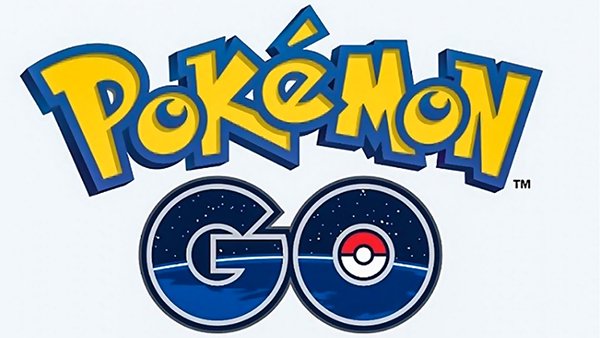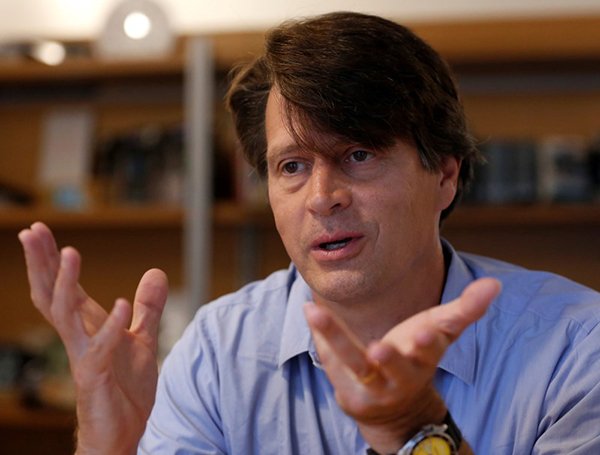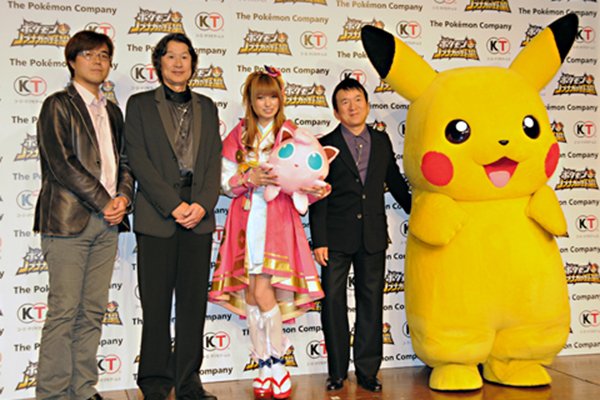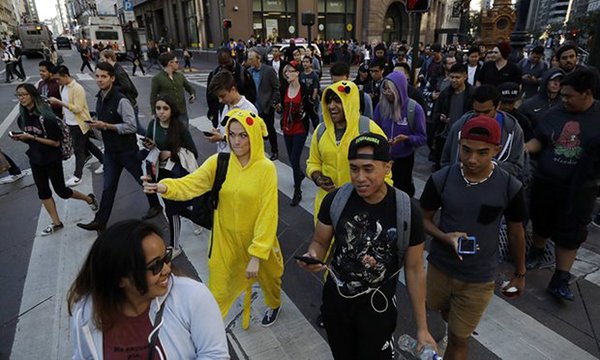According to mobile application data analysis company Sensor Tower data, "Pokemon Go" listed a month of sales of 200 million US dollars. As a developer behind "Pokemon GO," John Hanke is seen as a person with vision and fear of ridicule. However, the success of "Pokemon GO" is not a matter of time. It is behind a man's dedication for many years. Let's listen to John Hanke's story behind Pokémon GO.

Pokemon Go
Q: When you were working at Google, you were mainly responsible for Google Earth and Google Maps and other products, but then you developed Ingress again. What was the source of inspiration?
I'm very lucky. The Keyhole, a visual data application development company I founded, was acquired by Google for $35 million in 2004. The Earth Explorer project that we were doing then developed into Google Earth. In the first six years of Google, I focused on the development of Google Maps and Google Earth and related projects. The team grew from 30 in 2004 to 2010, with over 1,000 engineers and project managers and thousands of contractors.
After this, I want to start a business. Before joining Google, I worked at several startup companies. At that time we were all thinking about how to build a map of the world and how to integrate it into Android and iPhone. I grew up playing games. In my opinion, people like to socialize in games. The intersection between mobile games and maps seems very interesting.
With the permission of Google executives, mainly with the support of Larry, we formed a small team. We began to try to develop some interesting products. Our first product is Field Trip (Field Trip), an application that explores nearby historical monuments and cultural sites. After the release of "Field Trip", we started the "Ingress" project, which is the predecessor of "Pokemon GO".
Q: Your company's mission is exploration, practice, and social interaction in the real world. It doesn't sound like a game company's mission. How did this goal come from?
Our company started as Google’s internal startup company, and Google’s spirit is: not to copy others. You need to try and need innovation. At that time we were all thinking about what areas we wanted to explore, what products people did not have, and what they could bring to the world. We are not interested in copying other people's success. What we want to explore is a whole new field to see if there is something valuable.
We have listed a list with one above: a game where you need to go out and explore new places. The essence of this idea is to re-examine the world. There may be many interesting history, legends, and unknown secrets around you. If a product can help you find out, then that's good.
My child is staring at the screen all day. As a parent, I am troubled. I want to encourage my children to exercise in a gentle way. Our other goal is to pull people who are addicted to games from the games we build.

John Hanke
With regard to social networking, we have played the slogan of "real social". This is the era of social network proliferation: People establish connections and update their activities on the Internet. We realize that we can make a product that will transfer social online to offline so that people can really connect in the real world. At that time we didn't know what form we should take, but we thought this was an opportunity to "unlock the new world." This concept guides our product development.
Q: Google reorganized last year. Why did you choose to leave Google? Why did you choose Pokémon as a partner? At the time, why did you only accept investment from strategic investors and did not accept venture capital?
We launched Ingress in 2012 and since then it has been growing, downloading 1.5 million times, and it is still growing. "Ingress" completely follows the principles that we established at the beginning - exploration, discovery, sports, and socialization. We have learned a lot from it. However, how can this form be brought to more audiences?
At the time we had a variety of choices: to create a brand new IP, or to find a movie/game IP that could be combined with popular people. During the discussion, "Pokemon" caught our eyes. It is not hard to imagine that many people have played/watched Pokemon. As a game, it is known to players; as an anime, it is more liked by many audiences. The "Pokemon" story structure is that trainers go out and find and train pets. Pokemon fits perfectly with the augmented reality game we want to do.
On April Fool’s Day 2014, the Google Maps team launched the “Pokemon Challenge†to allow iOS and Android device users to use the elf in the Google Maps application. The event caused a network sensation when they released video views up to 1.8 million times. As a member of the Niantic team, we saw this activity spread like a virus. So we contacted The Pokémon Company and said, “This joke is amazing. Let's build a real game based on this concept.â€

Shiyuan Henghe (second from right)
At the time, Pokémon’s CEO Ishihara Masaru was also one of the players of “Ingress†and he was very interested in this concept. The first time we met and both parties hit it off, we all said "We must make it." Soon, we signed an agreement.
Then Google's Alphabet reorganization began, and we had to think about how to continue the project: whether to stay under Google or establish an independent company. We discussed with Pokémon and also contacted Nintendo through Pokémon. They are very willing to invest and hope to participate in this project as shareholders. They will provide IP authorization and participate as a game expert.
We can certainly choose to invest in VCs, but maintaining close cooperation with Pokémon and Nintendo will reassure them and their relationship will be stronger. They are good partners.
Q: How much do you know about "Pokemon" before Google's April Fool's Day joke?
I personally have not played Pokemon, but I understand it through my children. I am the father of three children. The eldest son just graduated from high school a few months ago. His daughter is in junior high school next year and his younger son is 10 years old. Our home is full of Pokemon trading cards, guides, video, and tape.
Q: Although "Pokemon GO" was built on the basis of "Ingress", you did not use the original code, but rewritten the engine. Is this a common practice and what are the advantages and disadvantages?
In the process of game development, you are usually dissatisfied with the first edition, and you will see all the architectural errors. At this point you can choose to repair and improve, but it is better to learn from the first lessons learned and then rebuild.
We have gained a lot of experience from Ingress. "Ingress" has millions of players. We can monitor the running of the game in the background: how the game behaves, how big the scale is, and what the price of running is. From this we find that if we come back, we have more and more effective ways to choose. So we decided to build new products on the new architecture.
I am very happy that we made this choice because if we use the first-generation technology, "Pokemon Go" will collapse because of too hot, and we are not likely to handle the influx of so many users. I am proud of my team and their achievements. We have also struggled in the development of Pokémon GO, but in the end we have appeared before everyone and achieved high traffic. The original choice of rewriting the second edition engine was definitely the most correct choice.
Q: One of my friends described your company as a "virtual real estate company" because you control real-world locations in the virtual world. Are you planning on letting other people decide the location of the elf station/delivery point? How do you see the relationship between virtual objects and real locations?
Our idea is to let people go out and explore their cities and discover the unknown. For the player, this is very interesting; for the city, the utilization rate of public facilities has increased. Will the park that you have never noticed become better?
It is undeniable that the adoption of games to involve citizens in urban construction is a weird idea. But we do not want to use the "high-pressure policy" to force people - "This is a good thing, go out and go for it." Let us quietly put this into the minds of the players. It is of course a good thing if you learn more about the community during the game, but we will not enlarge it in our products.
Whether it's "Ingress" or "Pokemon GO," we all chose what we think is interesting and worth exploring. We tried to combine many things that didn't look right, such as art, historical signs, museums, and sci-fi games.
We implanted the original data collected by "Field Trip" into "Ingress", including historical signs, photographs of public works of art, and GPS coordinates. Then we asked the "Ingress" users for locations that could serve as delivery points and let them send that information to us.
Many players enjoy the fun of finding new places and enjoying the places they find as part of the game. For many early players, this is their game. During the two or three years, we have received thousands of locations, many of which have been approved as part of the game, and Ingress can eventually be played in more than 200 countries. This data was applied to "Pokemon GO" without spending a lot of time collecting data.
The facts also prove that people did go out and formed a phenomenon that merchants near the Elven Station used aromatherapy to induce elf to attract traffic.
We conducted research after Ingress was released. Players will remember the businesses near the game site and prefer to shop in these places. Businesses that have used games to attract traffic have released ROI analysis reports and bonus guides. You can use Pokémon Go to make money if you want.
Q: I remember you said that organizing events is part of a business strategy. How are these events organized?
Offline sociality has always been respected by gamers, and our game is special in that it allows players to play in the real world and make new friends. Partying is actually part of the game. At the beginning, we organized a small informal gathering of 45 people, and everyone was very happy to share it with other players.
Q: What do people do at the party?
Our game's game party is different from other game players because they can get together to play games. After catching the elf, or after the battle, everyone can have a drink together - this is the perfect combination of game and social, providing players with new social choices.
"Ingress" players like parties very much and they have a name for this, called "Anomalies". Later we started organizing activities in various cities. Every week in Asia, Europe and the United States choose a city to host a rally and a global event once a month. As of now, tens of thousands of people have participated. We also broadcast live events, and the recent Tokyo party has more than 60,000 people onboard in Niconico. We hope to introduce this model to "Pokemon Go."

San Francisco Pokemon GO party
Its realization has already been organized by the players to organize such activities. In the weeks after the game was released, there was a Pokemon Go party in San Francisco with more than 9,000 people. Professional teams and college campuses are hosting similar events. We support this kind of activity. In the future, we may also hold official events. However, given the current size of players, we must first find out ways to ensure the safety of participants.
Micro Speaker,Mini Micro Speaker,Micro Bluetooth Speaker,Waterproof Micro Speaker
NINGBO SANCO ELECTRONICS CO., LTD. , https://www.sancobuzzer.com
